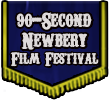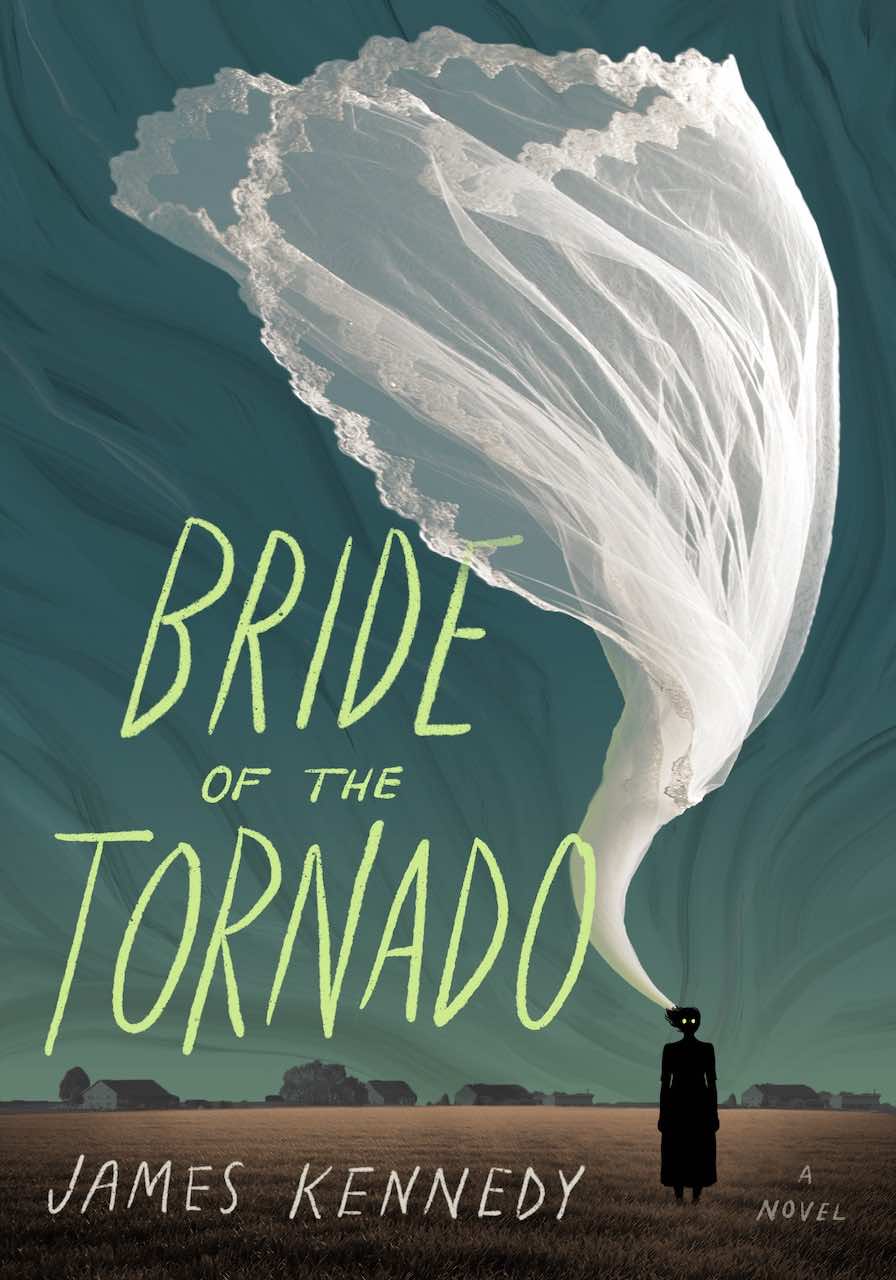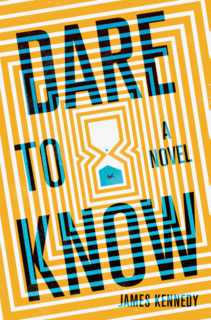How To Make A 90-Second Newbery, Step 2: Read The Book And Start Planning
September 20, 2017
« How To Make A 90-Second Newbery, Step 1: Watch Great Previous 90-Second Newberys How To Make A 90-Second Newbery, Step 3: Breaking Your Story And Writing The Script »

|
This is Step Two in the “How To Make A 90-Second Newbery” series. Click here to read “Step One: Watch Great Previous 90-Second Newberys.”
So you want to make your own movie for the 90-Second Newbery Film Festival. You’ve watched previous 90-Second Newbery movies as I recommended in Step 1 and gleaned lessons from them. You’re fizzing with ideas! You’re ready to rock! So what now?
Choose the book that you’ll adapt into a movie. Any Newbery Medal Winner or Newbery Honor Book will do, from 1922 to today. I made a list of all the Newbery Medal Winners and Honor Books where you can click on a book title to see all of its 90-Second Newbery movies. Is a certain book title not clickable? That means no movie has been made of it yet! (You should consider filming one of those books, by the way. It’ll make your movie stand out. Every year we receive way too many versions of The Giver. There are other books, people!)
Read the book and decide how you feel about it. Only make a movie of a book that interests you. You might love the book and want to honor it with your movie. Or maybe you only kinda-sorta like the book, and there are certain things you’d like to change about it in your movie. Heck, maybe you hate the book, and you’re burning to make a movie that’s a biting satire of it! That’s fine! Adapt a book that you have a definite point of view about, either for good or for ill.
Think about what kind of “twist” your movie will put on the story. A straightforward adaptation of the story is okay (like this movie of A Wrinkle in Time), but trust me, your movie will be better if you make it with a weird twist.
What do I mean by a “weird twist”? Here are some examples.
Telling the book’s story in a different genre. By “genre” here I mean a specific style of movie, like “horror” or “Western” or “musical.” By retelling the story of the book using the tropes and conventions of a certain genre, you can make your movie much more interesting. Remember those movies I reviewed in Step 1? Many of them worked because they transformed the story into a different genre, such as . . .
|
A musical. This song-and-dance version of The Twenty-One Balloons (watch) features a big cast singing original songs, with fun costumes and great acting. Bonus: an erupting volcano! |

|
|
A silent movie. This black-and-white silent movie of Crispin: The Cross of Lead (watch) tells the story visually through eye-catching action and brisk intertitles. |

|
|
A horror movie. This scary version of Charlotte’s Web (watch) reveals the hidden dark underbelly to this beloved, seemingly innocent animal tale. Grotesque and disturbing! |

|
|
A James Bond movie. This spy version of Ramona and Her Father (watch) shakes and stirs the mild domestic comedy of Beverly Cleary with the glamorous, violent 007 franchise, to absurd comic effect. |

|
|
A zombie apocalypse. The gentle animal capers of Mr. Popper’s Penguins (watch) take a deadly turn when the penguins start acting like bloodthirsty zombies. |

|
|
A Star Wars movie. Lightsabers! Space battles! John Williams music! This version of The Whipping Boy (watch) set in a galaxy far, far away has it all. |
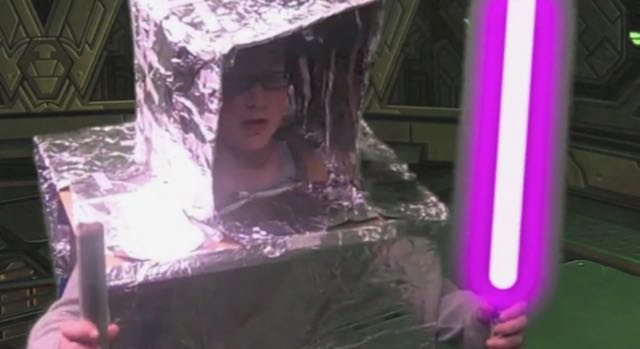
|
|
A Japanese samurai movie. These kids wear kimono and speak in subtitled Japanese in an Akira Kurosawa-style retelling of Heart of a Samurai (watch). |

|
There are so many other styles you can do, too! For instance, you can do your movie in the style of a badly produced 1990s sitcom with a canned laugh track and corny jokes. Or as a weepy telenovela. Or as a Godfather-like gangster movie. Or as a cowboy western. Or in the style of lucha libre (Mexican professional wrestling). Or as a Ken-Burns-like documentary. Or in the style of a Marvel superhero movie. Or in the style of a “gritty reboot.” Or in the style of a director who has immediately recognizable tics, like Wes Anderson or Alfred Hitchcock or Zack Snyder.
Hint: The more unlike your genre choice is to the original book, the more interesting your movie will probably be. Charlotte’s Web is a very sweet story, which is why the bonkers horror-movie version of Charlotte’s Web works so well.
But your movie’s twist doesn’t have to be a different genre. You have other options, such as . . .
Telling the book’s story in an unusual medium. There are so many ways to make a movie other than straight-up live-action. You can also make your movie using:
|
Claymation. The characters in this masterful stop-motion clay version of The Apple and the Arrow (watch) are better actors than a lot of living, breathing people! |

|
|
Puppets. You can get a lot of goofy, endearing physical comedy out of puppets, as this version of Frog and Toad Together (watch) shows. |

|
|
Animation. Good at drawing? Consider doing an animated version of your story, like this impresssive version of Holes (watch). |
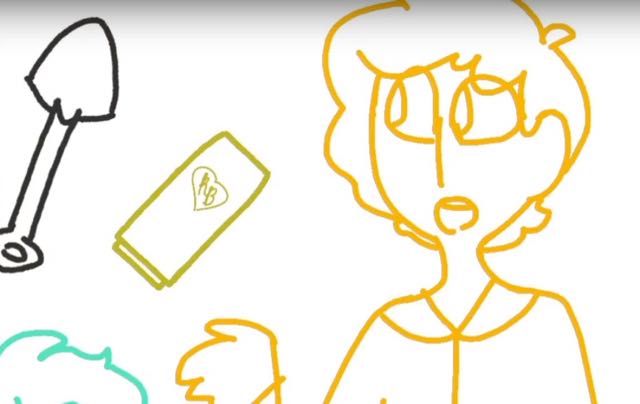
|
|
Minecraft. Take advantage of your Minecraft skills to pull off some jaw-dropping world-building and moviemaking, like this Minecraft version of Millions of Cats (watch). |

|
|
Lego Stop Motion. Stop motion work takes diligence and time, but the effects can be astonishing, like this lego version of The Wright Brothers: How They Invented the Airplane (watch). |

|
|
All Robots! Why not make an all-robot version of the book, like this funny version of Ramona Quimby, Age 8 (watch) (my favorite part is how the robot “vomits”). |

|
There are various other unusual ways you could use to tell your story. You could make an all-emoji version (here’s a video for “Do You Want to Build A Snowman?” done entirely in emojis); or in the style of side-scrolling video game like Super Mario Bros. (oh, you don’t think you can tell a good story that way? Check out this side-scrolling story); or tell your story through the chain-reaction machinations of a ridiculously elaborate Rube Goldberg machine (you can get your Rube Goldberg inspiration here)
There are other ways to give your movie a compelling twist! The more creative your “twist” is, the better! Try switching out an element of the movie: for instance, Julie of the Wolves can become Julie of the Cows. Or have the camera stay strictly in the point of view of just one character, like Because of Winn-Dixie told only from the POV of the dog. Or do something like this movie of The Sign of the Beaver, in which a boy tries to tell his father the story of the book, while the father keeps trying to change the story as the boy is telling it.
What I’m trying to say with all of this is: have fun with your movie adaptation of the book! Do something weird, original, and memorable! It will almost always be a stronger choice than a straightforward adaptation.
Figure out your resources. At the same time that you’re choosing a book to make a movie of, and figuring out the “twist” that will make your movie original, you should keep in mind the resources that you already have. What do you already have access to in terms of costumes, props, talent, and locations that you can use in your movie?
For instance, you may have some toy lightsabers and a Darth Vader costume sitting around. If so, maybe consider making your movie in the style of a Star Wars movie! Or maybe you and your friends have beautiful singing voices. In that case, consider making your movie in the style of a musical! Maybe there’s a creepy graveyard near your house. In that case, you could use it as a location for an adaptation of The Graveyard Book. Maybe your friend’s uncle’s friend has a horse farm. Then how about adapting Misty of Chincoteague with real horses?
As you’re choosing a book and a twist, keep your resources in mind. You might end up deciding to adapt a certain book in a certain style because you already have the specific resources to do it well.
So: raid your parents’ closets! Rummage through the storage areas in your home! What do you already own that you can use? Go to Goodwill or Salvation Army and see what fun costumes and props you can get for cheap! Visit your school’s drama department to see what costumes and props they have in storage that maybe you can borrow! Ask around with your friends about what resources they have! Look around your neighborhood to find locations that would look great in a movie!
Put a team together. Who among your friends would be perfect for certain roles? Who might be able to write a good script? Who are the good actors? Who has experience behind the camera? Who has the patient temperament to do editing after the shooting is done? Who is interested in post-production and maybe even doing special effects?
To sum up this post’s advice: before you start making your movie, choose a book you’re interested in, read it attentively, give it a twist that you’re enthusiastic about, and finally bring together a team and resources to make a great movie that’s within the reach of your skills, time, budget, and supplies.
That wraps it up for Step 2 of “How To Make A 90-Second Newbery.” In the next post, we’ll talk about analyzing the story of the book so you can write a great script!





